Background
The Mogollon Mountains lie to the East of the San Francisco River in Arizona (see my report about
Clifton Peak for more on minerals near the San Francisco River) between Reserve, New Mexico and Silver City, New Mexico. Most of the mountains are contained within the Gila National Forest. The area is composed of a significant volume of extrusive volcanic rocks associated with basin and range extension.
The collecting area is located about 20 miles south of the Gila Cliff Dwellings National Monument where the Gila River crosses Highway 15. The collecting area is a large area along the Gila River and its tributaries. Zeolites occur in open spaces within relatively flat lying dark volcanic flows. I have taken multiple side hikes through the immediate area and I have observed that zeolite occurrences are quite widespread, although exposures of larger vugs are isolated and not very common. The area that I collected most heavily is composed of two cavity bearing layers, both containing open space fillings of zeolites (Fig. 1). The upper layer contains proportionately larger cavities (in 3 dimensions), although less frequent, that are dominantly chabazite with occasional stilbite (Fig. 2). The lower layer is much more mineralized containing many more pockets than the upper layer and the pockets tend to be more flattened, although they can still reach over 30 cm in length (Fig. 3). The mineralogy of the lower layer is more complex with chabazite, stilbite, analcime, calcite and mesolite common.
Access to the area is quite convenient with two free campgrounds located nearby on both sides of the Gila river, both within walking distance to the zeolite occurrences. The Grapevine Campground is apparently home to the state’s oldest grapevine and the Cliff Campground is situated along the Gila River next to a series of cliff faces (Fig. 4). The latter is my favorite area to camp and is spectacular when the moon rises from behind the cliffs.
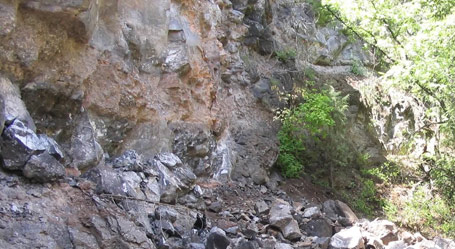
Figure 1. Section of cliff exposed during rock fall, showing the multiple mineralized layers typical of the area.
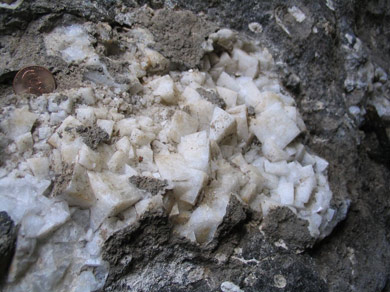
Figure 2. Vug with chabazites multiple centimeters along edge. This vug was exposed when rock fall was discovered, and exemplifies the nearly mono-mineralic nature of the chabazite horizon
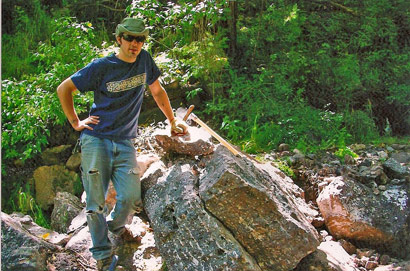
Figure 3. Boulder from the lower horizon from which the rock fall was
sourced. This boulder shows the stratified and dense nature of
mineralization in the lower layer. During the 2009 trip, this
boulder was broken down significantly exposing large vugs of
dominantly mesolite and analcime with minor chabazite and calcite.
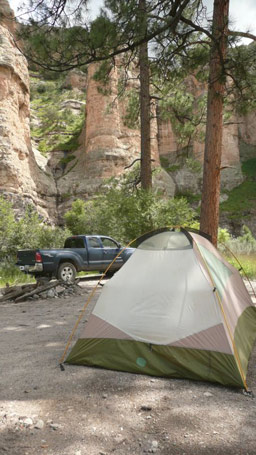
Figure 4. My campsite during the 2006, 2007 and 2008 trips.
Collecting
2005
I have made 6 trips to the area from 2005 to 2009. The initial trip was in June of 2005 and it was based on a New Mexico field guide to mineral collecting. This book noted small zeolite crystals occurring in vugs along the river; I was not ready for what was ahead of me. I discovered a rock fall in a small canyon tributary to the Gila (Figs. 5 and 6). The rock fall apparently had been affected by at least one large flooding event (perhaps the event that caused the fall??), evident by the boulders being distributed a significant distance down the canyon. Immediately upon reaching the pile of boulders I began finding open cavities lined with zeolites (Fig. 7). It was apparent that the crystals were not the sizes I was expecting based on the book’s descriptions, as I was already finding chabazite crystals in excess of 1 cm. Upon reaching the upper pile of boulders, I was greeted by a boulder about 4 ft by 3 ft by 2 ft with a cavity that was approximately 2 ft by 1 ft by 8 inches! This cavity was completely lined with chabazite crystals. The majority of the crystals were less than 5mm, but there were dozens of crystals up to 2 cm perched atop the chabazite “druze”. Several superb cabinet specimens were extracted from this boulder. On a side note, I collected at the New Street Quarry in New Jersey a few times in my past, and I would have pounded on a boulder for hours to extract equal chabazite crystals from that quarry that I left behind from this boulder; this was exceptional. At this point I realized that the small amount of newsprint I brought to wrap would not be sufficient nor would the limited tools. I wrapped up what I had thus far collected and headed back to the truck to unload specimens and reload with bigger tools and lots more wrapping paper.
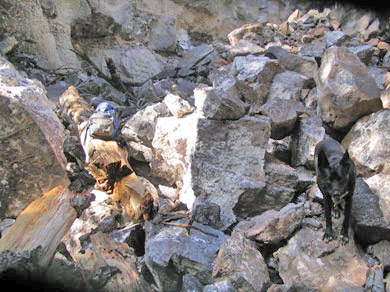
Figure 5. Image of lower rock slide in 2005 on the day of discovery. My dog, Rugosa, was 6 years old in this photo.
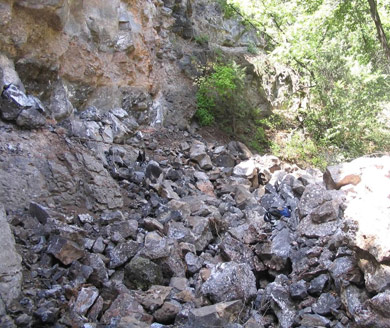
Figure 6. Image of upper rock fall. The cliffs in the background were the source of the material in the upper and lower rock falls. Note daypack for scale.
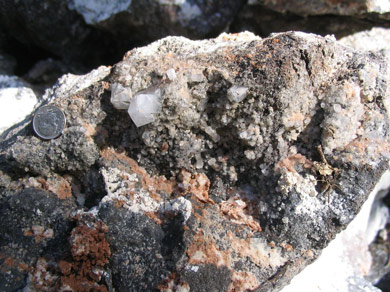
Figure 7. This is the first vug I found while ascending up the lower rock pile. Luckily I had my camera on hand. The main part of the vug with the inter-grown chabazites was removed intact.
Upon returning I found that about 30% of the boulders in the upper fall were mineralized with cavities. Most of the crystal bearing cavities were small, ping-pong to baseball sized, and typically 50% filled with massive chabazite (Fig. 8). The massive material commonly terminated with coarse grained chabazite crystals (Fig. 9). The key was to find the larger cavities as these provided more space for larger groups to develop (Fig. 10). I discovered one cavity that was about a foot by a foot where a plate of inter-grown chabazite crystals was easily removed (Fig. 11). At this point I began to notice an occurrence of crystal growth that I have observed at other localities, especially low temperature localities for calcite, other zeolites and fluorite. The floors of vugs were composed of interlocking equi-granular crystals where as the roofs of the vugs are lined with fine grained crystals with coarser groups and single crystals perched upon the finer grained crystals. The roofs make for very attractive specimens (Fig. 12).
I collected a fair share of what I considered to be amazing crystal groups with individual crystals up to 3 cm and called it quits for I knew I would be back. Based on the off the beaten path nature of this find and the clear evidence that I was the first person to see this I was sure I could collect more on the next trip.
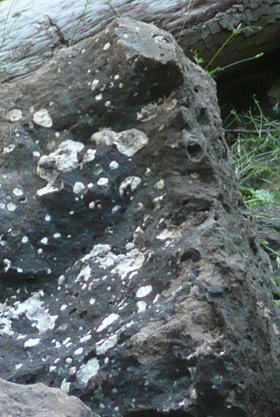
Figure 8. A 4 foot boulder showing the typical occurrence of chabazite vugs.
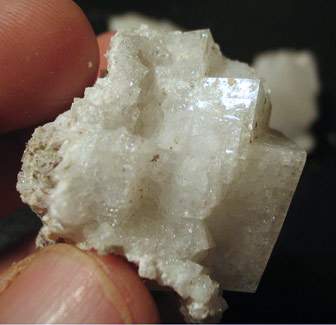
Figure 9. One of the nicer chabzites recovered from a smaller vug. Often the smaller vugs do not yield good material as the crystal incur damage during removal. Note the left side of specimen is spongy material, which was the bottom of the vug from which the crystals grew from.
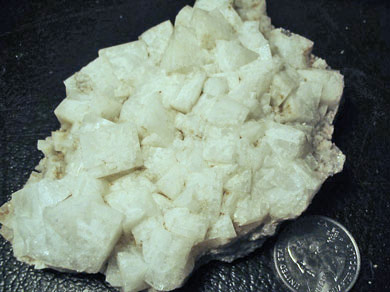
Figure 10. Typical chabazite crystal plate from one of the larger vugs.
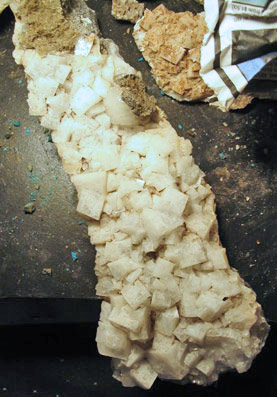
Figure 11. Largest plate of chabazite collected from the area in 2005. Note the partial sphere of stilbite in the upper right side of plate. Plate in approximately 30 cm in length.
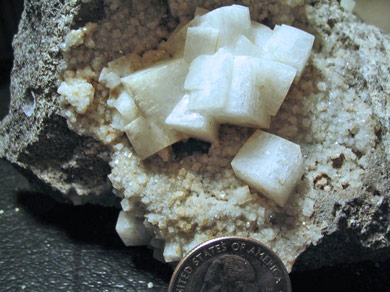
Figure 12. Cluster of inter-grown chabazite crystals on druzy chabazite from the 2006 trip. This in considered to be the best specimen collected out of all the trips.
2006
The next trip was not until July of 2006. It was clear that at least one person had been to the site after my 2005 discovery because the group of crystals in figure 2 was missing the center crystals. I had left them on my initial visit because they were attached to a very large competent boulder and the only option was breaking the crystals, which is what the person after me did. The other change in the area was that spring/winter floods had shuffled the boulder pile and new vuggy boulders were exposed. This was great! One boulder in particular was the most lucrative and yielded most of the specimens in figure 13. This boulder was about 4 ft by 4 ft by 3 ft and had two major weathered cracks running through it. Upon breaking the boulder down I encountered two significant pockets. One of the pockets was lined with druzy chabazite with coarse grained perched crystal groups (Fig. 14) and the other pocket was partially etched along the contact of the crystals and the cavity walls. The etched nature of the second pocket allowed for easy removal of multiple group with no matrix (Fig. 15). The specimens were just floating in the vugs. Many of the other boulders were very promising but their competent nature precluding breaking using standard cold chisels and sledge hammers (Fig. 16). I collected what I could and decided to do a bit of exploring before heading back to the desert in Arizona.
I explored the canyon walls a bit and wished I had ropes. Upon scaling the walls the only pockets that I could reach yielded the best stilbites I have to date from the locale (Fig. 17).
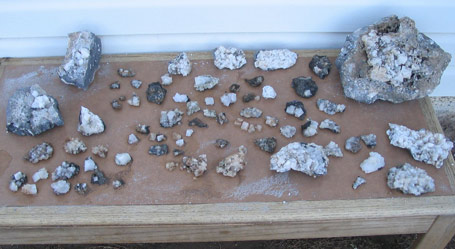
Figure 13. All specimens recovered from the 2006 trip. ~95% of the specimens are only chabazite. Table is 4 feet in length.
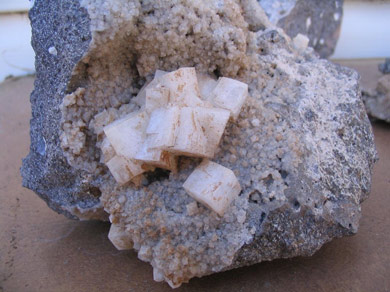
Figure 14. Specimen shown in figure 12 prior to being cleaned.
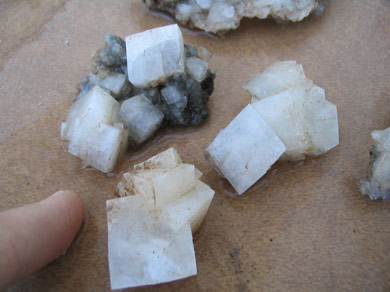
Figure 15. Three specimens that were removed from a pocket in 2006. All three of these specimens were extracted from their pockets only using only fingers as tools. The contact of the crystals and the vug was dissolved at some point in geologic history. Note author's finger tip for relative scale.
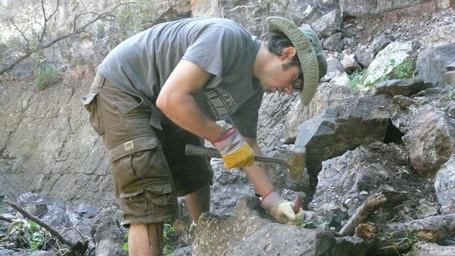
Figure 16. Author working the upper fall area in 2008 using typical 4 lb. sledge hammer and cold chisel.
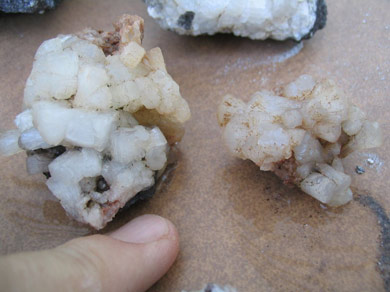
Figure 17. The two finest stilbite specimens found in 2006 from the cliff face in the upper fall area.
2007
In 2007 I only made one quick visit that yielded one very nice single crystal (Fig. 18). By this point the pile of boulders had been reshuffled again and no easy targets were observed. I decided to go for a reconnaissance trip up the main Gila Canyon to look for any other zeolite occurrences. I found vugs of quartz and zeolites scattered along preferential layers including heulandite crystals in one vug, but no large vugs were observed.
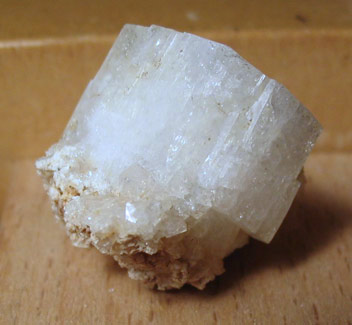
Figure 18. Nicely perched single chabazite crystal on druzy chabazite found in 2007. Crystal is 16 mm on edge.
2008
In 2008 I made what I then considered a final trip to the side canyon to be sure there were no more easy targets. I did not collect any specimens of note on this trip from the side canyon. As a result I decided to go for a walk along the Gila River. Although this walk was for leisure, I kept an eye open, as always, and brought a screwdriver. On the way back I observed a vuggy outcrop in a cliff along the river right beside Highway 15. I thought to myself that this would be an amazing outcrop if it were mineralized when I realized that it was mineralized. All I had on me was the screwdriver and the sun was telling me to get a move on as I still had a 2.5 hour drive ahead with work the next morning. I managed to remove one nice boulder with one side fully coated in chabazite. I managed to trim one 10 cm plate from this and I retained a large cabinet specimen (Figs. 19 and 20). The chabazite morphology from this outcrop is more complex than the simple rhombohedrons I collected on the tributary canyon.
I made another trip back to the outcrop along the Gila River in November of 2008 on an especially warm weekend. I went better equipped with real tools and went to work. The outcrop proved to be quite hard and only a few small vugs were collected. These vugs yielded chabazites of the morphology observed on the previous trip but these were isolated groups on druzy heulandite and chabazite with small reverse scepter quartz crystals (Figs. 21, 22 and 23).
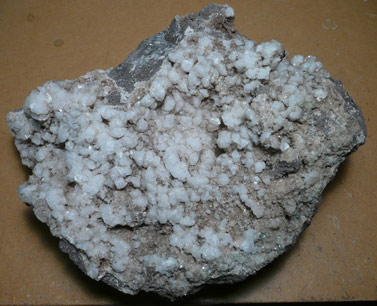
Figure 19. A 20 cm plate of chabazite crystals from the Gila River outcrop.
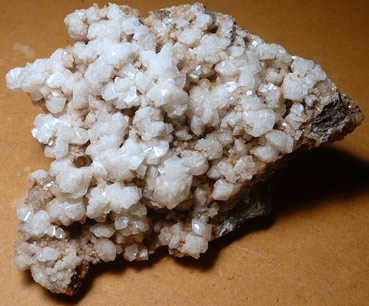
Figure 20. An 11 cm chabazite specimen from the Gila River outcrop. This specimen came from the same pocket as the specimen shown in Fig. 19.
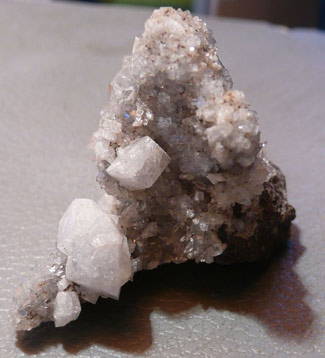
Figure 21. A 4 cm tall specimen of chabazite perched on druzy chabazite and heulandite with small sceptered quartz crystals from the Gila River outcrop.
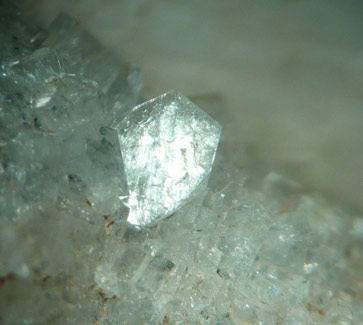
Figure 22. Heulandite crystal from specimen in Fig. 21 viewed through a stereoscopic microscope. Crystal is approximately 4 mm in length and is the largest heulandite found to date.
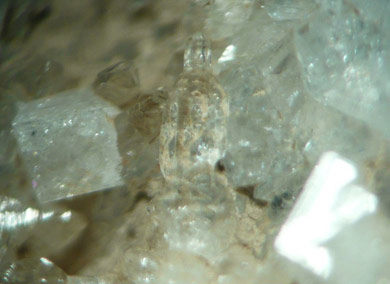
Figure 23. A 6 mm complex quartz scepter from the specimen in Fig. 21.
2009
The last visit I made was in September of 2009. The primary destination was SA canyon, which I am told has been collected very hard. I did collect some analcime lined vugs, but the crystals were quite small in this canyon and my friend and I decided to check out the side canyon, again. The area of the rock fall still had a few hard boulders that were mineralized, but nothing easily collected. We decided to work on a few of the large boulders from the lower level with complex mineralogy that had been transported down the canyon. We encountered many vugs with water damaged mesolite and chabazites. I took home once exceptional piece for the day (Fig. 24) but decided that most of the material was not worth holding onto.
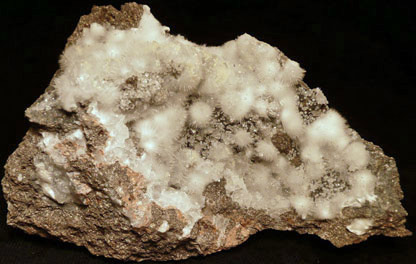
Figure 24. Specimen of mesolite on chabazite and analcime recovered from the boulder in Fig. 3. Late stage sub-mm scale chabazite crystals are pierced by the mesolite crystals. Specimen in 15 cm across.
Collecting Accessibility
This area is a nice drive and should remain open for years to come as a locality with wonderful camping (Fig. 25) and prolific crystals (Fig 26). I look forward to the day that I am in the area again. I have moved from Arizona to Colorado so years will likely go by... perhaps by then another rock fall will have occurred.
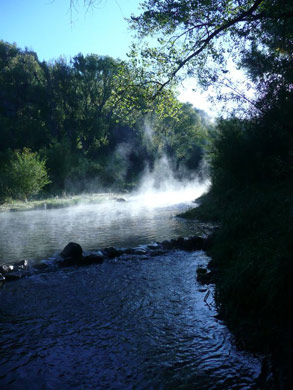
Figure 25. Early morning view of the Gila River in 2009.
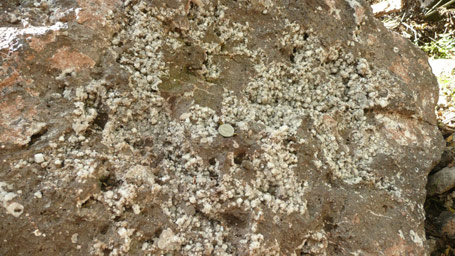
Figure 26. Boulder exposing many small chabazite+calcite vugs found during the 2008 trip.
CLICK THE LITTLE MINER TO RETURN TO THE FIELD TRIP PAGE
